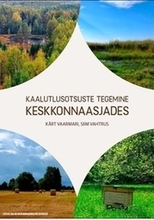Many environmental decisions have a discretionary nature. When making such a decision, an official has the right to decide whether and/or which kind of decision to make. For example, under which conditions to provide an environmental permit (permit for extraction of mineral resources, water-use permit, etc.), under which conditions should a spatial (land-use) plan be adopted or when to consider the EIA adequate and sufficient.
However, making discretionary decisions is a complicated task as the decision-maker has to take into account a number of interests (the entrepreneurs’, local populations’, environmental, state and other public interests). The responsibility of the decision-maker is high since the decision has to be balanced and it must be made and formulated in conformity with requirements to such decisions.
In practice, the officials are not always able to weigh different interests in a balanced way. They are often unable to assess, which environmental measures would be proportionate for both the developer and the environment or the people living in the surrounding area.
To ease and simplify the decision-making, the EELC composed guidelines for making lawful discretionary decisions. The guidelines were designed as a tool for officials of local (municipal) governments and state authorities, whose daily work includes making decisions with significant environmental impact.
The guidelines, illustrated with practical examples and diagrams, were completed in autumn 2013 and made available to everyone via our webpage. It was followed by three trainings to officials introducing the guidelines and encouraging their use in practice.
The project is funded by Estonian Environmental Investment Centre (KIK).


